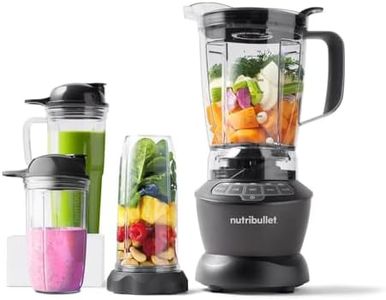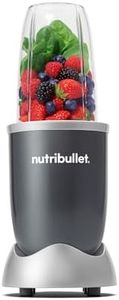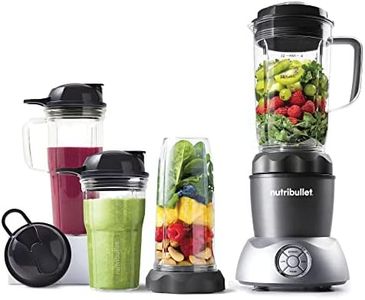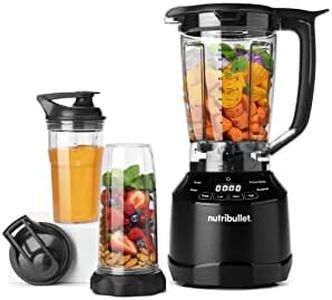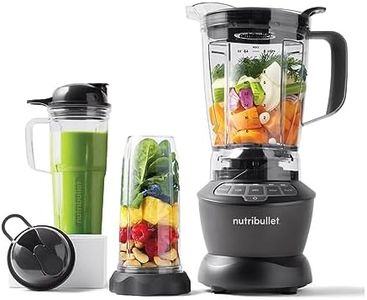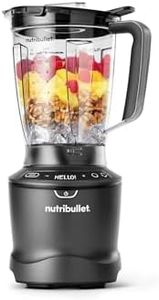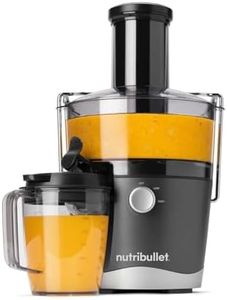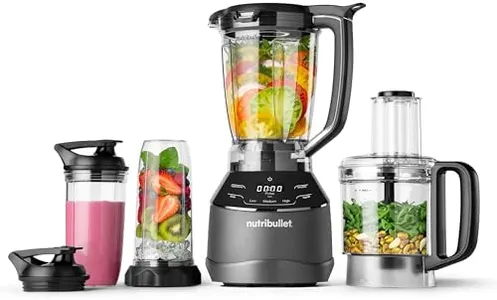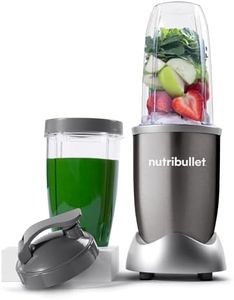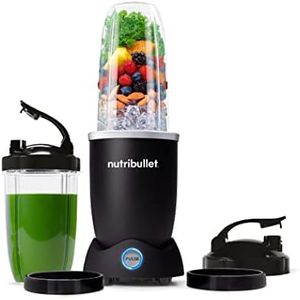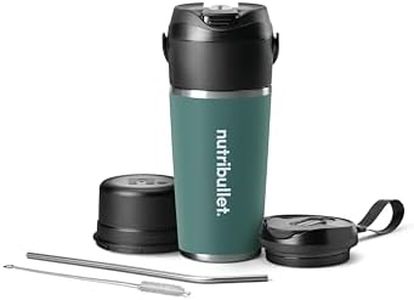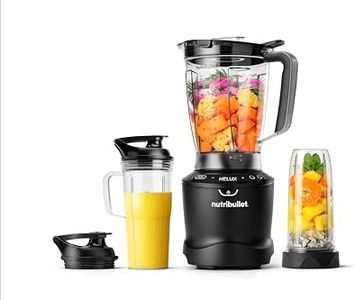We Use CookiesWe use cookies to enhance the security, performance,
functionality and for analytical and promotional activities. By continuing to browse this site you
are agreeing to our privacy policy
10 Best Nutribullet Types
From leading brands and best sellers available on the web.Buying Guide for the Best Nutribullet Types
Choosing the right NutriBullet or similar personal blender comes down to your lifestyle, the types of ingredients you plan to blend, and how much you want to prepare at once. The core idea behind NutriBullet is convenience—quickly making healthy smoothies or blends with minimal fuss. But not every NutriBullet is the same: some are small for single serves, others are more powerful for tougher ingredients or larger batches. Focusing on a few key specifications will help you find the best fit for your blending needs and routine.Motor Power (Wattage)Motor power, measured in watts, tells you how strong the blender is. This is important because stronger motors can handle tough ingredients like frozen fruits, nuts, and leafy greens, and they blend everything smoother and faster. Lower wattages, often around 200–350 watts, are good for softer fruits and small daily single-serve smoothies. Medium power, like 600–900 watts, strikes a balance for most fruits, vegetables, and even some ice or seeds. High-power models, above 1000 watts, are best if you want to turn tough ingredients into ultra-smooth blends or work with thick recipes like nut butters. If you mostly blend soft or simple mixes, go lower; if you want to make green smoothies, frozen drinks, or experiment with different foods, look for a higher wattage.
Cup/Bottle CapacityThe capacity of the blending cup or bottle decides how much you can blend at once. Small capacities, around 12–18 ounces, are perfect for solo servings and easy portability. Medium sizes, about 24 ounces, suit people who want a larger drink or may blend for two. Large capacities, over 32 ounces, are best for families, batch prep, or multi-person servings. Choose based on how much you usually want to make and whether you prefer small, quick blends or larger batches.
Blade DesignBlades are responsible for how well a blender chops, grinds, and mixes ingredients. Some NutriBullets use flat blades for milling dry foods like oats or coffee, while others have cross blades for blending smoothies and shakes. Most modern models use cross blades for versatility. If you plan to make mostly smoothies, a standard cross blade is usually enough. But if you want to grind dry ingredients or mill grains, check if the blender offers a separate blade for dry milling.
Ease of CleaningCleaning is important because you’ll want to use your blender every day without hassle. Some blenders come with cups and lids that are dishwasher safe, while others need hand washing. Simpler designs with fewer parts are usually easier to clean. If you’re always in a hurry or dislike doing dishes, look for models with dishwasher-safe components or self-cleaning features.
Control SettingsPersonal blenders usually keep things simple: many have only one speed or an on/off pulse function. More advanced models may have multiple speeds or blending programs for different textures (smoothie, puree, etc.). Basic controls are good for people who just want a quick blend with minimal thought, but if you want to try a wider range of recipes or like more control over texture, extra settings can be handy.
Portability & AccessoriesSome NutriBullets are designed mainly for home use, while others come with features for taking your smoothie to go, like travel lids, extra cups, or handles. If you frequently take your drinks with you, look for a model that includes these options. If you only use your blender at home, these extras may not be as important, but it’s handy to have replacement cups or lids for convenience.
